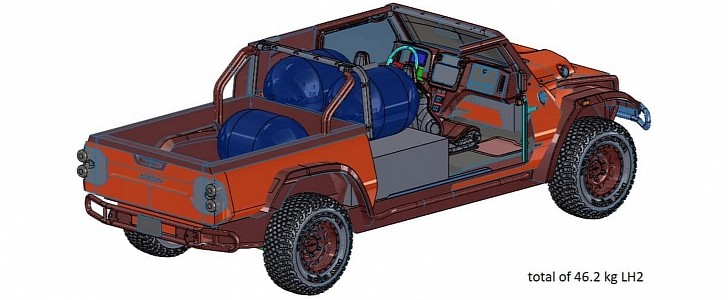To endure the total 600 miles to 900 miles the competition may have – depending on the course, they may add a third hydrogen tank in the truck bed. To Autoweek, Chris Voorhees said they are still evaluating which would be the best solution considering refueling penalties. Voorhees is the president of First Mode, the engineering company helping SCG develop the Boot FCEV.
According to the Facebook post, Tesla, Ford, and Volkswagen are “all in on pure battery electric vehicles.” At the same time, SCG has “decided fuel cells alone or with batteries are a more capable clean energy option than pure batteries alone.”
The reasons for that are clear. As much as battery electric cars present better energy efficiency, they are heavier and take a lot more time to charge than filling a hydrogen tank demands. Another issue is how costly battery packs still are.
One way to tackle that disadvantage would be to adopt a battery swapping strategy, as Nio has successfully done in China. Yet, battery packs would still be cumbersome. The only solution for that would be a new technology such as solid-state batteries, which also have the advantage of being safer than batteries with liquid electrolytes.
BEVs’ main advantage is that they can be charged at home, while FCEVs need a hydrogen network that is yet not in place. While that needs to be addressed, using a reasonable battery pack associated with fuel cells could allow them also to be recharged at home, leaving the hydrogen tank for longer trips.
SCG ends its challenge by saying that Tesla, Ford, and Volkswagen already have vehicles well developed or already for sale, while the Boot FCEV is still a clean sheet of paper. Yet, SCG is confident it will be able to beat any BEV competitor – if any of them dares to accept the challenge.

